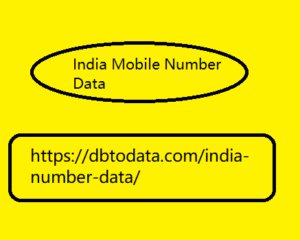Post by account_disabled on Mar 11, 2024 23:26:29 GMT -6
A few months ago, at an event, I met a well-known fashion blogger who revealed to me the magical world of Instagram (but not only), of all the machinations behind it, the high engagement numbers and the large following that some well-known personalities of the platform (including himself) manage to obtain even by paying. I'm writing about it today because I found many of the techniques described, in great detail, in this J'Accuse by Sara Melotti . This is nothing new, in fact let's say that it is now clear to everyone that to become a "social media star" you need to have technical skills, communication skills and MONEY. Yes, because for some time being an "influencer" means earning and where there is a profit there are entrepreneurs who invest (the influencers themselves) to improve their service and make it attractive to the market. As Sara says: “When the algorithm came into play everyone freaked out.
People no longer saw our posts, the numbers dropped quickly and some of us, in India Mobile Number Data a panic, started looking for 'creative' solutions to deceive this evil algorithm and stay visible." When we do business with Mark Zuckerberg 's business , the house always wins. We must deserve every single like , view or follower , whether it is, by entering into the good graces of the algorithm, a precarious and by no means certain result. To obtain a stable outcome that satisfies both the public and the advertiser, you need to dig deep into your wallet. Investment is equally necessary to build a following. Two techniques to gain visibility, one fraudulent and one legitimate There are two ways to get results. The first is to refer to companies that, at the limits of legality, have built hosts of fake accounts (Bots) and are willing to make them available to you to build a following and interactions. In this case you can boast, within a few weeks, tens of thousands of virtual followers who do nothing except increase the number of followers. A number that the most naive companies consider fundamental.

For each post you have to pay a few tens of euros to get likes and comments in line with the amount of following built up. From the outside, everything appears natural and spontaneous. This is called scam ; obtaining a following and fake interactions means deceiving companies willing to pay who are unable to verify the actual nature of those who interacted with the account. There is a gray area, from an ethical point of view, in the use of bots. These can be trained to perform ordinary actions such as following accounts and liking a specific audience. Often those who receive the attention of bots are not aware that these actions have been automatically generated by software and allow those who undertake them to acquire a following. This practice is very slow compared to the previous one. The second method, legitimate , consists in paying the platforms directly to improve the following numbers and the visibility of the posts.
People no longer saw our posts, the numbers dropped quickly and some of us, in India Mobile Number Data a panic, started looking for 'creative' solutions to deceive this evil algorithm and stay visible." When we do business with Mark Zuckerberg 's business , the house always wins. We must deserve every single like , view or follower , whether it is, by entering into the good graces of the algorithm, a precarious and by no means certain result. To obtain a stable outcome that satisfies both the public and the advertiser, you need to dig deep into your wallet. Investment is equally necessary to build a following. Two techniques to gain visibility, one fraudulent and one legitimate There are two ways to get results. The first is to refer to companies that, at the limits of legality, have built hosts of fake accounts (Bots) and are willing to make them available to you to build a following and interactions. In this case you can boast, within a few weeks, tens of thousands of virtual followers who do nothing except increase the number of followers. A number that the most naive companies consider fundamental.

For each post you have to pay a few tens of euros to get likes and comments in line with the amount of following built up. From the outside, everything appears natural and spontaneous. This is called scam ; obtaining a following and fake interactions means deceiving companies willing to pay who are unable to verify the actual nature of those who interacted with the account. There is a gray area, from an ethical point of view, in the use of bots. These can be trained to perform ordinary actions such as following accounts and liking a specific audience. Often those who receive the attention of bots are not aware that these actions have been automatically generated by software and allow those who undertake them to acquire a following. This practice is very slow compared to the previous one. The second method, legitimate , consists in paying the platforms directly to improve the following numbers and the visibility of the posts.


